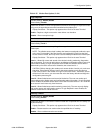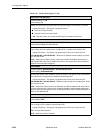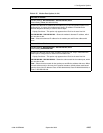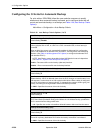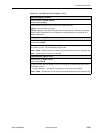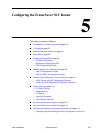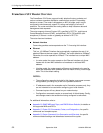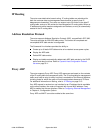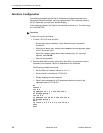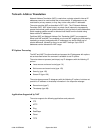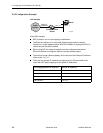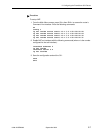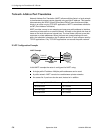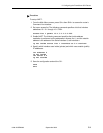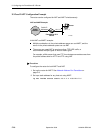
5. Configuring the FrameSaver SLV Router
9128-A2-GB20-80 September 2002
5-3
IP Routing
The router uses destination-based routing. IP routing tables are maintained for
both the customer data and management data domains to specify how IP
datagrams are forwarded. The router can support up to 32 entries in the data IP
routing table, and up to 300 entries for the management IP routing table. When an
IP address and subnet mask are assigned to an interface, an entry is automatically
created in the IP routing table.
Address Resolution Protocol
The router supports Address Resolution Protocol (ARP), as specified in RFC 826.
The router provides for 256 ARP table entries. The timeout for completed and
uncompleted ARP table entries is configurable.
The Command Line Interface provides the ability to:
Create up to 64 static ARP table entries to be retained across power cycles.
Display the ARP table.
Delete ARP table entries.
Display and delete automatically added static ARP table entries by the DHCP
server and relay functions. Refer to
Dynamic Host Configuration Protocol
Server
on page 5-11.
Proxy ARP
The router supports Proxy ARP. Proxy ARP responses are based on the contents
of the IP routing table for management traffic. The IP routing table for management
traffic must have an entry for every host that is reachable on the Ethernet interface,
including hosts for which the router will not forward packets because of IP filters.
For additional information on filtering, refer to
IP Filtering
on page 5-15.
If an ARP request is received on one interface for an IP address that is reachable
on the other interface, the router will respond with its own MAC address. Proxy
ARP is enabled via the user interface. Refer to
Configuring Ethernet Management
in Chapter 4,
Configuration Options.
Proxy ARP and NAPT cannot be enabled at the same time.



